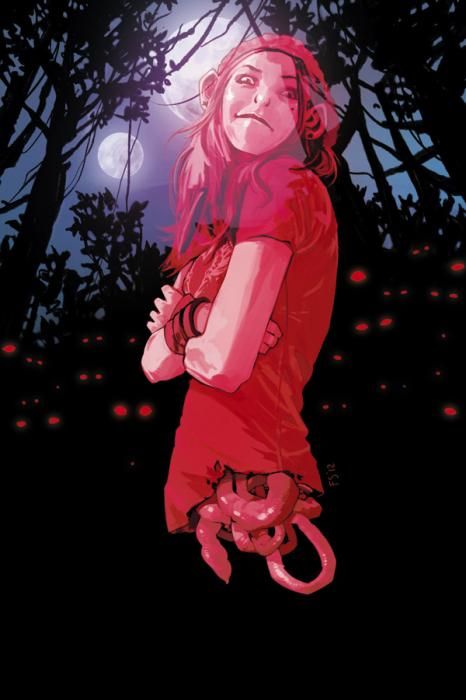When it works, as it does in "Saga" #3, world-building is stunning, entertaining and revelatory -- but it becomes mind-blowing when you're learning about those worlds alongside the protagonists of the story. Three issues into this series, "Saga" should be a tangled mess of subplots and character nuance, but this latest installment gives you everything you need to know to hit the ground running right alongside new parents, Alana and Marko, as they try to find a better life for their newborn daughter (and series narrator), Hazel.
With her husband mortally wounded, Alana steels herself to confront the "spiritual defenders of Cleave" in her quest to find the Rocketship Forest. Complicating matters is a gassy newborn and a pursuing bounty hunter who happens to be a cross between a spider and a woman.
That's all you really need to know about "Saga" the series and "Saga" #3 in particular. The glorious thing about this book is that anything -- anything!! -- can and does happen. Want to see a rhino man spit in the viewscreen face of Prince Robot IV (also known as one of these television-headed people)? Done. Disemboweled ghosts? They're in here too. Stunning final page reveal that you never saw coming that is way more impactful than any words could describe? Yeah. Brian K. Vaughan and Fiona Staples bring that too.
The world-building is mind-numbing, but not in a practical sense. It's the sort of mind-numbing brain test that occurs when you discover something completely new and fresh and wonder why it wasn't discovered before. Vaughan writes a new world without blinders that is hauntingly familiar and strangely compelling. From the parameters and range ascribed to the emotions and abilities of Prince Robot IV to the particulars required to successfully complete Marko's magic, boundaries are established only to be broken again. Vaughan writes a plethora of entertaining personalities and mashes them all together. The rhino-horned Wreath's broken "standard" language is comical and informative.
To match Vaughan step for step, Staples' art is simplistic and complex, detailed and sketchy all at the same time. Her colors soak into the pages like watercolors on bond paper and add a spiciness to the story that is welcome and exciting. The backgrounds seep away from the characters in this story as they do not share the defining outlines of black ink the characters hold. It is a beautiful, deceptively simple technique that adds atmosphere and depth of field to the story.
The characters Staples draws, no matter how alien they appear, all have the ability to act and evoke a response from the reader (some more than others) from the perturbed acceptance a new mother feels when she realizes someone just gave her good advice about her baby to the static annoyance of Prince Robot IV as he hits a dead end.
Make no mistake, "Saga" is not for everyone, but there is something for everyone in "Saga." Readers are in for an enjoyable and disturbingly memorable comic book experience.

